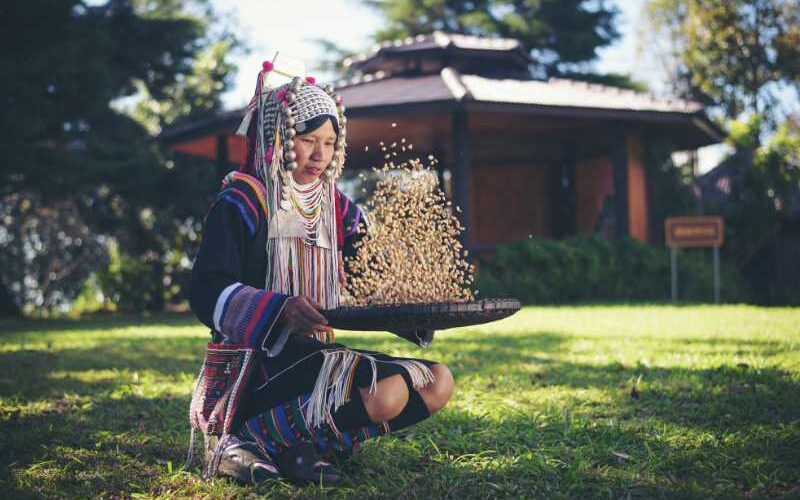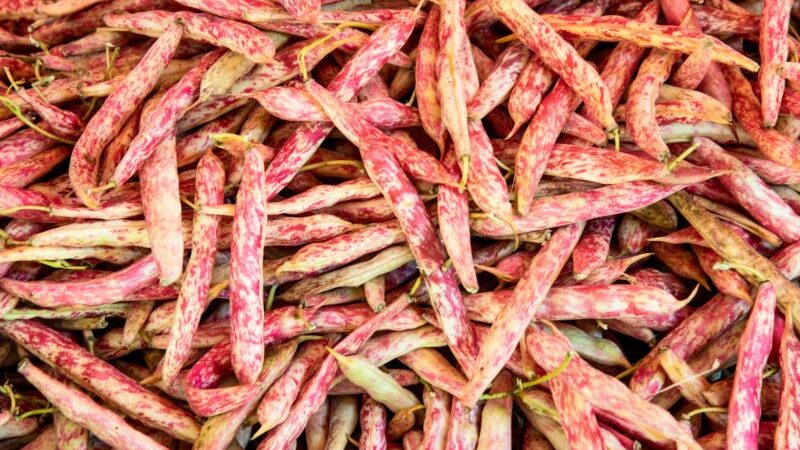Growing Great Northern Beans.
Alongside with cannellini beans, great northern beans are another classification of white beans widely consumed across America. Growing great northern beans (that is a long name) is somewhat easier than growing other types of beans as they are often grown as a bush type of beans, which means we won’t necessarily have to use a support.
As they are more popular grown as bush type of beans, the article will be focused on growing them as a bush type. Despite this, if you plan to grow them as pole beans, you can follow the same guidelines as with the other types of white beans.

Optimal Way to Grow Great Northern Beans
Great northern beans are best planted when the temperature is between 65-85° F in air and 60° F in soil. Plant the beans 1-1.5 inch deep into the soil in a place with full sun. Space the bush types 3-5 inches from each other in rows 2 feet apart.
If you have issues with big animals such as rabbits or rodents. Try to acquire a hardware cloth or chicken wire and place them in the top of your just planted seeds until they sown, to avoid getting them dug up.
Growing Great Northern Beans in Seedling Trays
You can also start the germination process of great northern beans in seedling trays. To start this process, fill the seedling trays with seed starting mix and plant them about 1 inch deep into the soil. If they sprouted outdoors, transplant them right into your garden beds or pots when they get their first set of true leaves.
If they sprouted indoors and you plan on transplanting them outdoors in the garden, remember to let them go through their respective hardening process.
Beans are shallow rooted plants, so they prefer to be sown directly into their definitive place. If you transplant them, they might suffer from transplant shock and not settle their roots properly, resulting in problems such as leaves dropping, leaf curl, and many other situations which may complicate the growing process and the harvested amount.
Despite this, sowing them in trays will avoid having your seeds dug up by animals, so if you decide to take this approach, try applying inoculant powder after transplanting the seedlings to help the roots stablish.
Chicken wire and the inoculant powder are recommended if you plant beans constantly, but if this is your first time planting them, I suggest you try for the first season and adapt accordingly into the next periods.
Growing Great Northern Beans in Containers

Beans are shallow rooted plants, which makes them a good choice to plant in containers, as they don’t need to be too big. Despite this, If you are planning to plant a bush type of great northern beans, then it is better to plant them into garden beds, as you will have more space to plant greater quantities of beans unlike the space you’ll have growing them in pots.
This doesn’t mean that planting them in containers is a bad choice, it just means that you will need to use a lot of pots to get a great harvest.
To sow great northern beans in containers, plant them 1 inch deep into the soil. You can use potting mix for the soil or just blend one for yourself by mixing 33% of compost, 33% of peat moss or coco coir and 33% of perlite or vermiculite.
The pot should be about 12 inches in diameter and 10 inches deep. Here I’ll leave a link to amazon to acquire 5 gallon pots that work well to plant bush and vining beans.
It’s also important to have some draining holes ready in any pot that you use. As beans dislike having “wet feet” and this could lead to root rot.
Soil Requirements
While growing great northern beans, it’s best to plant them in an area with full sun inside a clay or loamy soil with a Ph between 6-7. But the most important part is to have them settle in a rich-nutrient soil by giving it a nice touch of compost, as this will be the main source of the beans growth.
What’s the reason for this? Well, beans are able to fix the nitrogen in the soil due to the bacteria in their roots (that’s the reason why they are a good companion plant), so it’s not necessary to apply a nitrogen fertilizer to help with their growth.
If you want to feed them and help them grow faster whatsoever, try giving them a mid-season side dress of compost of apply a kelp extract solution.
Mulch
Before applying mulch, make sure remove all the weeds from your garden bed, preferably by hand as the tools could go too deep into the soil and damage the shallow roots of the beans.
The mulch it’s great to maintain the weeds away and will help the soil conserve it’s moisture and temperature, which is very useful during hot spells.
Support
As we said earlier, great northern beans are usually grown as bush types, so they don’t really need to be trellised. But if you are growing pole beans, then here are a couple of supports you could apply.
An often used idea is to plant some bamboo poles in a circle-shape and connect them at the top with a string in a teepee kind of form. If you are starting to plant beans for the first time, this is a good and affordable idea.
Make sure to plant the bamboo poles at least 1 feet deep into the soil if you live in a windy area, if the bamboo is planted too shallow, it might drop due to the weight of the crops or by a heavy wind, or by both. In the case you plant beans regularly, it might be a good idea to get an obelisk trellis.
Beans can also be attached to fences or arches, and other ornamental trellis styles such as this bean tower plant support.
Common Pest and Diseases
Click on this link to see the common pest and diseases beans suffer from
Harvesting Great Northern Beans
Great Northern beans will be ready to harvest around 60-75 days after they’ve been planted. Usually they are harvested as dry beans when the pods are shriveled and the seeds rattle. Or they can also be harvested as fresh beans when the pods turn into a bright yellow color.
Here are a couple ways to collect Great Northern Beans from their pods.
1- Pick the pods by hand when they are ready and then open them to get the seeds inside.
2- Place the pods into a bag and throw it against the floor multiple times. Most of the seeds will get out of the pods which saves a lot of time.
Despite this, using the second method will make some parts of the pods stay with the great northern beans so you will need to winnow your beans to “clean them”.

A cool way to winnow your beans is to place an empty basket in the floor and slowly pour the unwinnowed beans into it while they pass in front of a fan, doing this a couple of times will clean most part of the leftover pods.
Great Northern beans are popular in stews and soups, and can be used as a substitute for cannellini beans. Both of them have the same amount of calories and protein which are 130 calories and 8g of protein per half a cup of beans, but northern beans have a greater content of fiber (7g vs 5g).
Texture wise, Great northern beans have a lighter texture and a milder flavor.
And that’s it! I hope this guide on growing great northern beans was useful for you. I’ll be wishing you a great season gardener!




